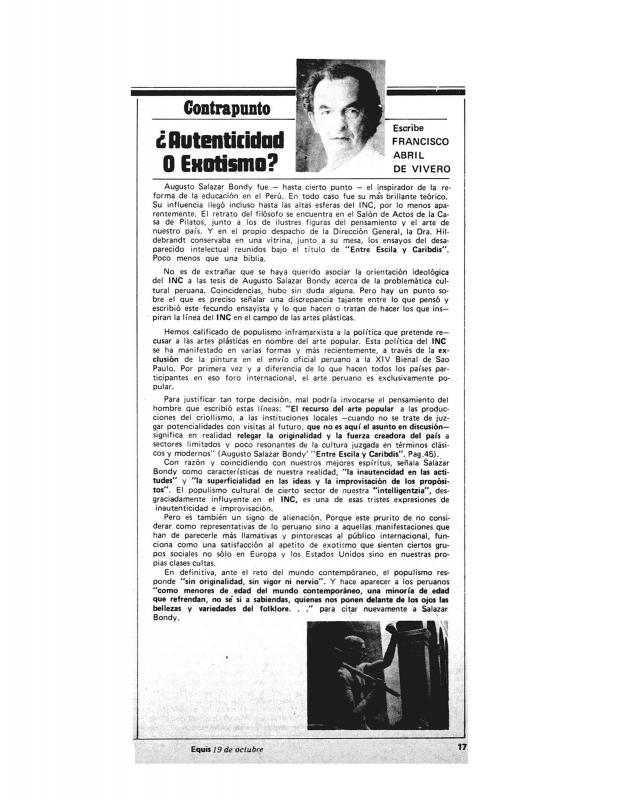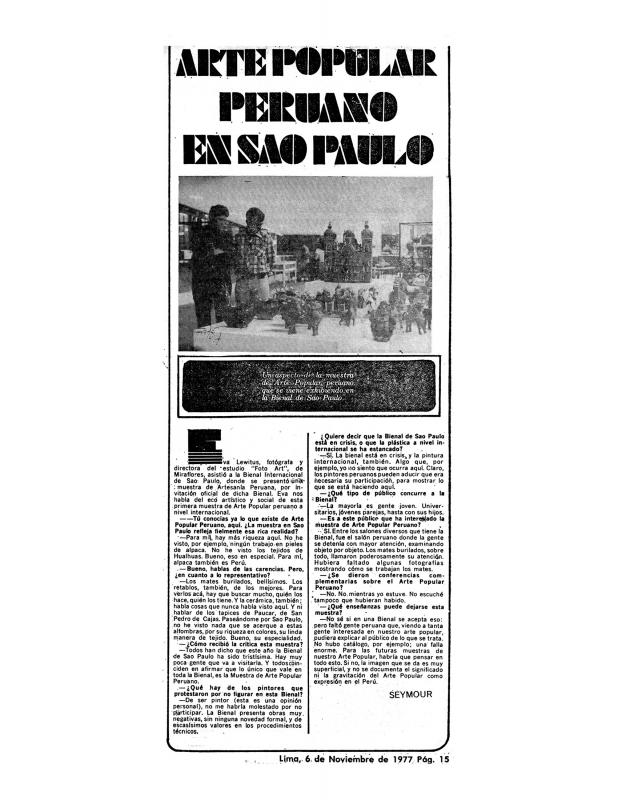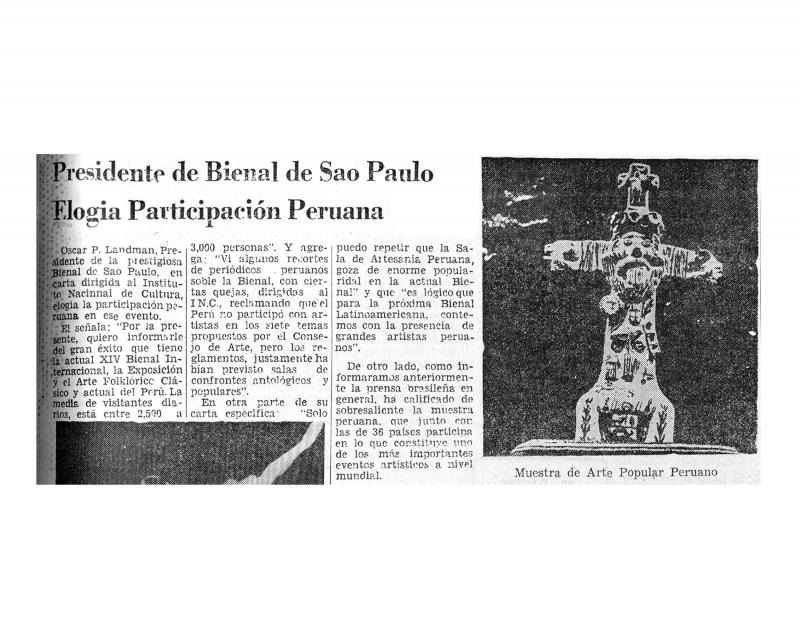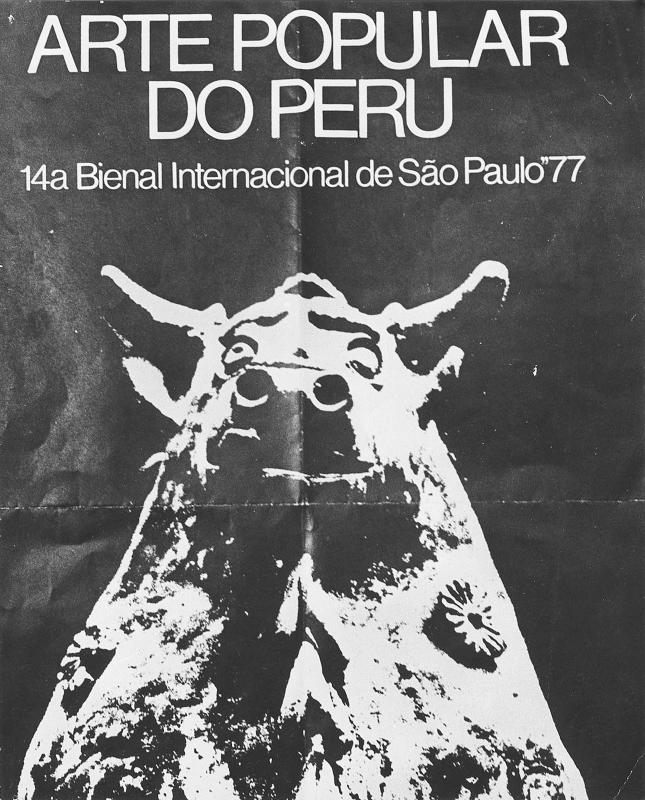These interviews were conducted by the Peruvian journalist Ismael Pinto (Moquegua, Peru, b. 1938) who spoke with a group of visual artists about the folk art that was sent to the XIV Bienal de Sao Paulo (1977) to represent the country. The author interviewed the artists Venancio Shinki (b. 1932), Alberto Dávila (1912–88), Enrique Galdós Rivas (b. 1933), Francisco Abril de Vivero (1919–2004), Miguel Baca Rossi (1917–2016), and Miguel Ángel Cuadros (1928–95), all of whom clearly expressed their disappointment. Abril de Vivero was more radical, claiming that it degraded “the artistic image of Peru” down to about the level of exotic items for tourists. [Please refer to the ICAA digital archive for the text “¿Autenticidad o exotismo?” (doc. no. 855918">855918)].
In 1977, a collection of folk art was sent to the XIV Bienal de São Paulo as Peru’s sole contribution to the event. The biennial’s organizing committee had invited Peru to participate as part of the “Retrospective Exhibitions,” one of the event’s three sections, whose objective, according to the rules, was to show works that would “reflect a participant’s cultural and artistic past” through works by a recognized artist or a collection of works from a particular movement, period, or place.” [XIV Bienal Internacional de São Paulo (São Paulo: Prefeitura do Municipio, Governo do Estado, Governo Federal, 1977), pp. 3 y 8]. In Peru, however, it was thought that the INC (Instituto Nacional de Cultura del Perú) had specified the nature of the shipment. This misunderstanding revived the controversy that had arisen in late 1975 when the same Peruvian institution granted the art prize or Premio Nacional de Cultura to the folk artist Joaquín López Antay (1897−1981), a retablista who created traditional altarpieces. What happened in the case of the São Paulo biennial once again prompted a group of “highbrow” visual artists (or those with greatest access to the market) to air their complaints, on the grounds that the so-called “arts and crafts” were not real works of art and that the INC was blocking the development of true art.
A letter from the Argentinean art critic Élida Román (b. 1941) addressed to the INC was attached to the Ismael Pinto interview, announcing that she was resigning her position as Director of the Museo de Arte Italiano–Galería del INC because she disagreed with the institution’s cultural policies regarding the Bienal de São Paulo. [See the ICAA digital archive (doc. no. 855811).] Also, regarding this Brazilian event, see the following texts in the ICAA digital archive: “Protesta contra INC manifiestan plásticos” (no author) (doc. no. 855211); “Perú: a presença da arte popular” by Leslie Lee (doc. no. 857190); “Populismo inframarxista” (doc. no. 855232) and “¿Autenticidad o exotismo?” (doc. no. 855918">855918) both by Francisco Abril de Vivero; “El Perú en la Bienal de Sao Paulo” by Jorge Caillaux (doc. no. 855937); “Arte popular peruano en Sao Paulo” by Alfonso de la Torre [Seymour] (doc. no. 855899); “Presidente de Bienal de Sao Paulo elogia participación peruana” (no author) (doc. no. 855956); and “Arte popular do Peru: 14a. Bienal Internacional de Sao Paulo ’77” (no author) (doc. no. 857172)].









